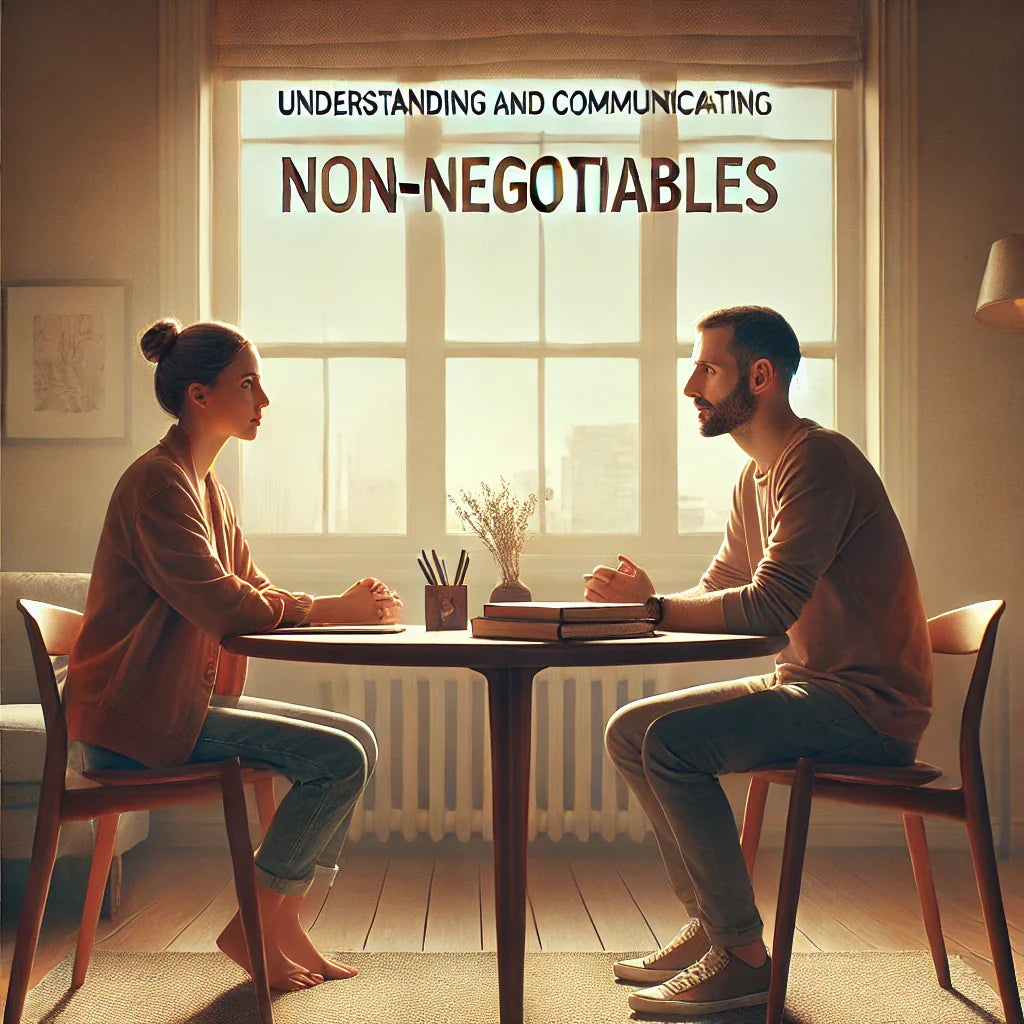
Understanding and Communicating Your Non-Negotiables
Share
“True connection is built on honesty about what we can and cannot compromise.”
The second post will guide readers through identifying and communicating their relationship non-negotiables, setting them up for partnerships based on mutual respect and understanding. When we know what we truly need, we can align with someone who respects our boundaries and shares our values.
Section 1: Why Dealbreakers are Essential
Introduce the concept of dealbreakers and explain why they’re necessary. While it may sound harsh, having boundaries is one of the healthiest ways to ensure alignment. Touch on examples like work-life balance, faith, family planning, and finances, explaining how these can become significant issues if misaligned.
Section 2: How to Identify Your Non-Negotiables
Offer a simple exercise:
• Listing Your Must-Haves and Must-Not-Haves: Guide readers through creating two lists: one for absolute must-haves and one for non-negotiables. These might include things like shared faith, commitment to personal growth, or a balanced approach to finances.
• Reflection Questions: Questions like “What relationship values am I unwilling to compromise on?” or “When have I felt unsupported in the past, and why?”
Section 3: Communicating Your Boundaries
Communication tips to help readers express their boundaries confidently:
• Timing: Encourage them to have these conversations early, but in a natural, non-confrontational way.
• Using “I” Statements: Phrases like “I value…” or “I need…” help frame their needs in a non-accusatory way.
• Scripts for Common Boundaries: Provide examples, like how to discuss finances, family involvement, or future goals with a new partner.
Section 4: Recommended Resources
• Setting Boundaries and Dealbreakers
• Psych Central: How to Set Healthy Boundaries – A detailed guide on setting and enforcing personal boundaries.
• Positive Psychology: The Importance of Personal Boundaries – Insights on identifying and respecting personal boundaries in relationships.
• Verywell Mind: Relationship Dealbreakers – A helpful list of common relationship dealbreakers and why they matter.
• Books on Boundaries and Relationships
• Boundaries by Dr. Henry Cloud & Dr. John Townsend – A highly recommended read on setting and maintaining boundaries in relationships.
• Attached by Amir Levine and Rachel Heller – A look into attachment styles and their impact on relationship dynamics.
• Guided Exercises and Tools
• Relate.org: Setting and Communicating Boundaries in Relationships – Exercises for couples to identify and discuss their boundaries.
• Therapist Aid: Boundaries Exploration Worksheet – A downloadable worksheet to help identify personal boundaries.